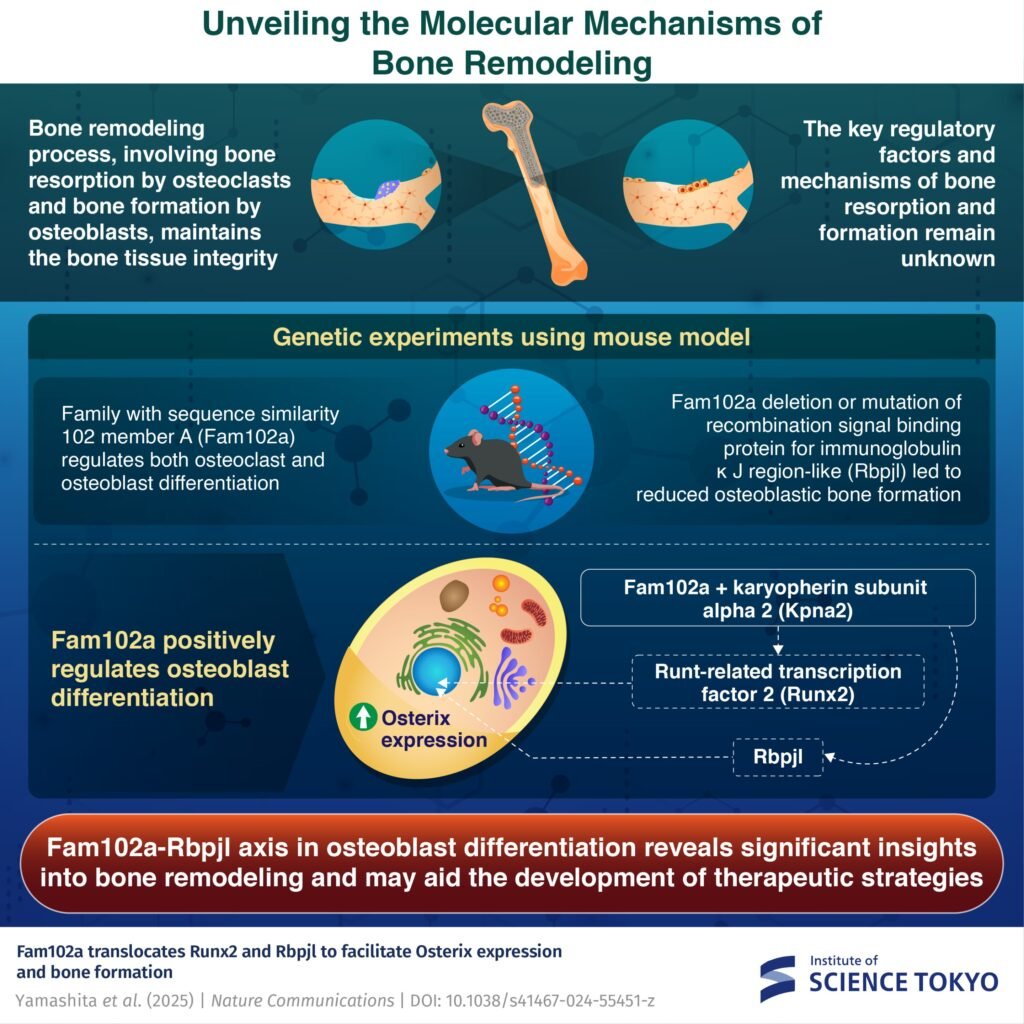The human skeleton is supported by bones, which are living tissues essential for physical movement. Bone remodeling, a process that involves bone formation and resorption, is crucial for maintaining the structural integrity of bones. Osteoblasts and osteoclasts are responsible for bone formation and resorption, respectively, contributing to the overall balance of bone remodeling.
When the bone remodeling process is impaired, it can lead to conditions like osteoporosis and joint fractures. Therefore, researchers worldwide are focusing on understanding the mechanisms behind bone remodeling to develop potential therapeutic strategies.
A recent study led by Professor Tomoki Nakashima from the Institute of Science Tokyo in Japan delved into the genetic factors influencing osteoclast and osteoblast differentiation. Published in Nature Communications, the research highlighted the role of the Fam102a gene in regulating both osteoclast and osteoblast differentiation.
The researchers found that Fam102a plays a central role in promoting osteoblast differentiation by enhancing the expression of the Osterix protein through the regulation of Runx2. In experiments using Fam102a-deficient mice, they observed that the absence of Fam102a led to an osteoporosis-like condition characterized by low bone volume.
Further investigations revealed a significant interaction between Fam102a and Kpna2, a protein involved in transporting molecules across the nuclear membrane. This interaction indicated that Fam102a relies on Kpna2 to regulate Runx2 activity during osteoblast differentiation. Additionally, gene expression analyses identified Rbpjl as a key transcription factor downregulated in osteoblasts lacking Fam102a, emphasizing the importance of the Fam102a-Rbpjl axis in bone remodeling.
Overall, this study provides valuable insights into the molecular mechanisms underlying bone metabolism and remodeling. The findings could pave the way for innovative therapies for osteoporosis and other bone-related conditions. Professor Nakashima envisions the potential applications of this research in developing novel osteoporosis treatments.
For more information on this groundbreaking research, you can refer to the published study in Nature Communications by Yu Yamashita et al. from the Institute of Science Tokyo. This study sheds light on critical molecular interactions in bone remodeling, offering promising avenues for future therapeutic interventions.
This content is provided by the Institute of Science Tokyo and offers a glimpse into the cutting-edge research being conducted in the field of bone remodeling. Stay tuned for more updates on the latest advancements in bone health and therapeutic strategies.


